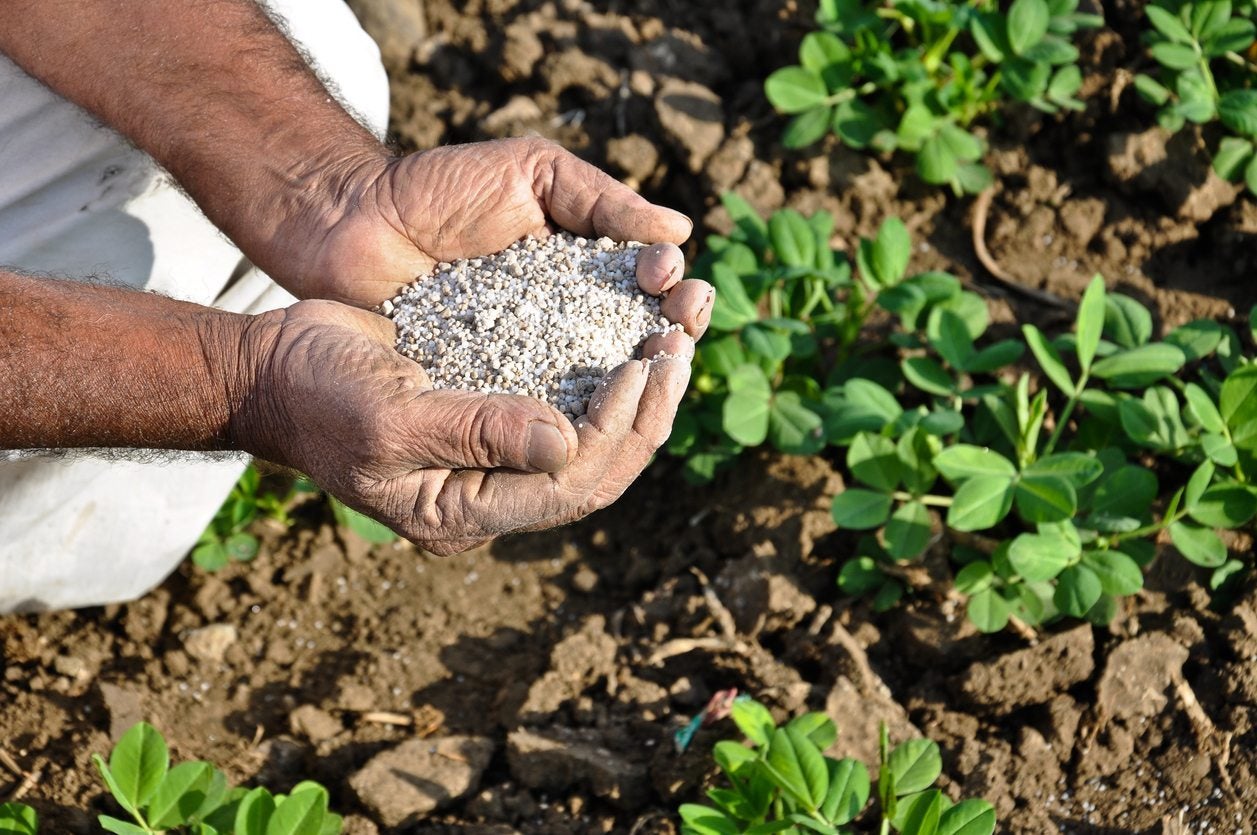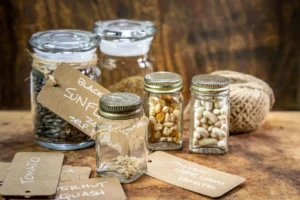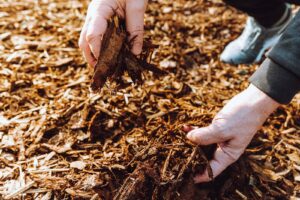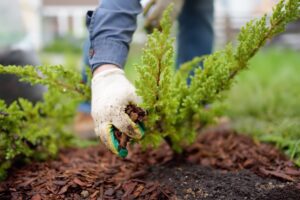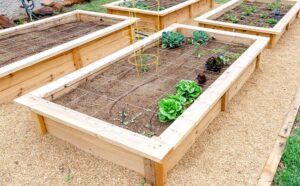Garden Soil Sulfur: The Essential Element Your Plants Need
You’ve likely spent countless hours perfecting your garden — choosing the right plants, watering diligently, and even battling persistent pests. But have you considered whether your soil contains adequate sulfur? This often-overlooked nutrient plays a crucial role in plant health and productivity. Without sufficient sulfur, your garden may never reach its full potential, regardless of how much care you provide.
In this comprehensive guide, you’ll discover everything you need to know about garden soil sulfur — from its fundamental role in plant biology to practical application techniques that can transform your garden. Whether you’re an experienced gardener or just starting out, understanding sulfur’s importance will elevate your gardening results to new heights.
Understanding Sulfur: The Fourth Essential Nutrient
When discussing plant nutrients, most gardeners immediately think of the “big three” — nitrogen, phosphorus, and potassium (NPK). However, sulfur deserves recognition as the fourth major nutrient essential for plant growth. In fact, plants need sulfur in quantities similar to phosphorus, making it a macronutrient rather than a micronutrient.
The Biological Role of Sulfur in Plants
Sulfur serves numerous vital functions within plant cells that directly impact growth, development, and overall health:
- Protein synthesis: Sulfur is a key component of amino acids cysteine and methionine, which are fundamental building blocks of proteins. Without adequate sulfur, plants cannot form the proteins necessary for growth.
- Chlorophyll production: While sulfur isn’t a component of chlorophyll itself, it’s essential for the formation of chloroplasts where photosynthesis occurs. Plants deficient in sulfur often display yellowing leaves due to compromised chlorophyll production.
- Enzyme activation: Many enzymes require sulfur to function properly. These enzymes catalyze countless biochemical reactions needed for plant metabolism.
- Oil and flavor compound development: Sulfur is particularly important in crops like onions, garlic, and members of the brassica family (cabbage, broccoli, etc.), contributing to their distinctive flavors and aromas through sulfur-containing compounds.
- Disease resistance: Adequate sulfur levels help plants produce compounds that enhance natural defense mechanisms against various pathogens and pests.
According to research from the USDA Agricultural Research Service, sulfur-deficient plants are more susceptible to environmental stresses and produce lower yields even when all other nutrients are abundant. The interconnected nature of plant nutrition means that sulfur deficiency can limit the effectiveness of other nutrients, particularly nitrogen.
The Sulfur Cycle in Soil
Understanding how sulfur moves through your garden ecosystem helps explain why deficiencies may occur. The sulfur cycle involves complex interactions between the atmosphere, soil, plants, and microbial communities:
Atmospheric sulfur dioxide, primarily from industrial emissions and volcanic activity, enters soil through precipitation. Once in the soil, sulfur exists primarily as sulfate (SO₄²⁻), the form most readily available to plants. Soil microorganisms continually transform organic sulfur compounds into inorganic sulfate through a process called mineralization.
Plants absorb sulfate through their roots and incorporate it into organic molecules. When plants die and decompose, their sulfur-containing compounds return to the soil, continuing the cycle. However, this natural cycle has been significantly altered in recent decades, leading to widespread sulfur deficiencies.
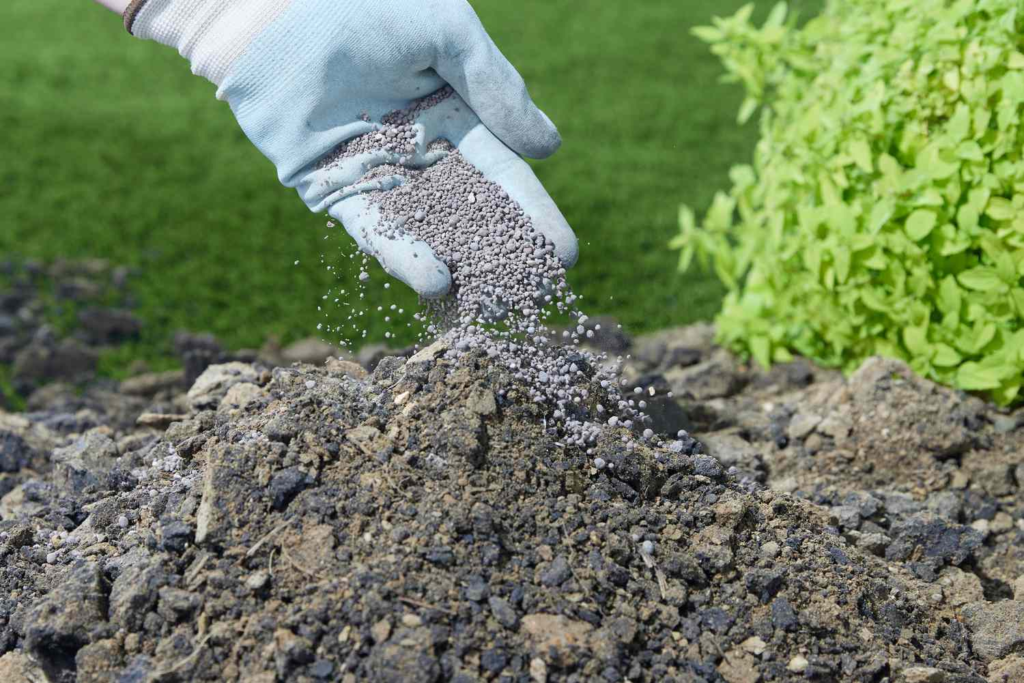
Identifying Sulfur Deficiency in Your Garden
Recognizing sulfur deficiency symptoms early can prevent significant crop losses and help maintain optimal garden productivity. Unlike mobile nutrients like nitrogen that show deficiency symptoms in older leaves first, sulfur is relatively immobile within plants, so deficiency symptoms typically appear in younger leaves initially.
Common Symptoms of Sulfur Deficiency
You might be dealing with sulfur deficiency if you observe these signs in your garden plants:
- Uniform yellowing of younger leaves: Unlike nitrogen deficiency that affects older leaves first, sulfur deficiency causes the newer, upper leaves to yellow uniformly across the leaf, including the veins.
- Stunted growth and spindly stems: Plants lacking sufficient sulfur often appear stunted with thin, woody stems and reduced overall growth.
- Delayed maturity: Flowering and fruiting may be delayed or reduced in sulfur-deficient plants.
- Pale flowers: Some plants may produce lighter-colored blooms than is typical for the variety.
- Reduced cold tolerance: Sulfur-deficient plants often show increased sensitivity to cold temperatures.
For vegetable crops, sulfur deficiency can significantly impact both yield and quality. Onions and garlic may lack their characteristic pungency, while brassicas like broccoli and cabbage may develop poorly and taste bland.
Regional Factors Affecting Sulfur Availability
Your location plays a significant role in determining whether your garden soil is likely to be sulfur deficient. Several regional factors influence soil sulfur levels:
Climate: Warm, humid regions with high rainfall typically experience more sulfur leaching, as sulfate is highly mobile in soil and easily washed away. If you garden in the southeastern United States, sulfur deficiency is more likely than in drier western regions.
Soil type: Sandy soils with low organic matter content have limited capacity to retain sulfur. Clay soils generally hold sulfur more effectively due to their greater cation exchange capacity.
Agricultural history: Years of intensive cultivation without sulfur replacement can deplete soil reserves. This is especially common in areas that have transitioned from conventional to organic farming practices.
Air quality improvements: Ironically, environmental regulations that have successfully reduced sulfur dioxide emissions from power plants and industrial facilities have contributed to decreasing atmospheric sulfur deposition in many regions. According to the EPA’s Clean Air Status and Trends Network (CASTNET), sulfur deposition has decreased by more than 60% across most of the United States since the 1990s. While this represents a significant environmental improvement, it has inadvertently reduced a once-reliable source of sulfur for agricultural soils.
Testing Your Soil for Sulfur Content
Before adding sulfur to your garden, it’s important to determine whether your soil actually needs it. Proper soil testing provides valuable insights into your soil’s nutrient status and guides appropriate amendment strategies.
Professional Soil Testing Services
The most reliable method for assessing your soil’s sulfur content is through a comprehensive soil test from a reputable laboratory. Many state university extension services offer affordable soil testing, often for under $20 per sample.
When submitting soil for analysis, specifically request sulfur testing, as it’s not always included in standard soil nutrient panels. Most labs report plant-available sulfur as sulfate-S, measured in parts per million (ppm).
Interpretation guidelines for sulfate-S levels in garden soils:
| Sulfate-S Level (ppm) | Classification | Recommendation |
|---|---|---|
| Below 5 ppm | Very Low | Immediate sulfur application needed |
| 5-10 ppm | Low | Sulfur application recommended |
| 10-20 ppm | Medium | Monitor plants for deficiency symptoms |
| Above 20 ppm | Adequate | No immediate sulfur application needed |
When interpreting test results, consider that different plants have varying sulfur requirements. Brassicas, onions, and garlic generally need higher sulfur levels than other vegetables. Perennial ornamentals typically have lower sulfur requirements than annual food crops.
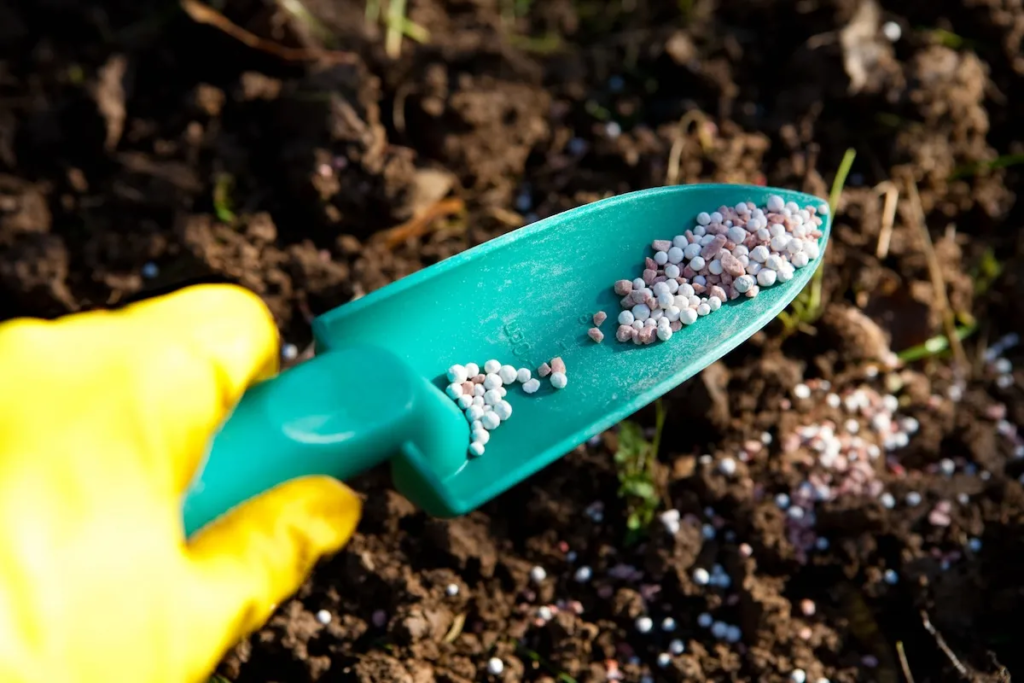
DIY Assessment Methods
While not as precise as laboratory analysis, you can gain valuable insights into your soil’s sulfur status through observation and simple home tests:
Plant indicator method: Certain plants show sulfur deficiency symptoms more readily than others. Growing a test patch of mustard greens or broccoli can serve as an early warning system, as these crops quickly display yellowing of young leaves when sulfur is inadequate.
Soil organic matter assessment: Soils with higher organic matter content (darker color, crumbly texture) generally have better sulfur reserves, as organic matter is a primary reservoir of soil sulfur. Light-colored, sandy soils with low organic matter are more likely to be sulfur deficient.
pH relationship: Soil pH significantly affects sulfur availability. Very high pH (alkaline) soils often have reduced sulfur availability, even when total sulfur content is adequate. If your soil pH is above 7.5, sulfur availability may be compromised regardless of total sulfur content.
The USDA Natural Resources Conservation Service provides free soil maps and data through their Web Soil Survey that can give you valuable background information about your soil’s inherent properties: https://websoilsurvey.sc.egov.usda.gov/
Sulfur Amendments: Types, Applications, and Considerations
Once you’ve determined that your garden needs additional sulfur, selecting the right amendment and application method becomes your next priority. Various sulfur sources are available, each with distinct characteristics, benefits, and potential limitations.
Organic Sulfur Sources
If you follow organic gardening practices, these natural sulfur sources align with your approach:
Gypsum (Calcium Sulfate): Contains approximately 17-18% sulfur along with calcium. Gypsum is pH neutral, meaning it won’t acidify your soil while providing both sulfur and calcium. It’s particularly valuable for clay soils, as it helps improve structure without changing pH. Typical application rates range from 20-30 pounds per 1,000 square feet.
Epsom Salt (Magnesium Sulfate): Contains about 13% sulfur along with magnesium. Ideal for gardens needing both nutrients, but should be used cautiously as excessive magnesium can compete with calcium uptake. Typical application rates range from 1-2 pounds per 100 square feet.
Potassium Sulfate (Sulfate of Potash): Contains approximately 18% sulfur along with potassium. This dual-purpose amendment is excellent for fruiting plants that benefit from additional potassium. Look for organic versions derived from natural mineral deposits rather than synthetic sources. Typical application rates range from 2-4 pounds per 100 square feet.
Compost and Organic Matter: High-quality compost typically contains 0.2-0.3% sulfur. While not concentrated, compost provides a slow, steady release of sulfur along with numerous other benefits for soil health. Annual applications of 1-2 inches across your garden provide consistent sulfur replenishment.
Manure: Various animal manures contain significant amounts of sulfur, with poultry manure being particularly rich (typically 0.5-0.8% sulfur). Well-composted manure applied at 50-100 pounds per 100 square feet provides substantial sulfur along with other nutrients.
Elemental Sulfur for pH Adjustment
Elemental sulfur (90-99% S) serves a dual purpose in garden soils. It not only supplies the nutrient sulfur but also gradually acidifies soil as soil bacteria convert elemental sulfur to sulfuric acid. This makes it particularly valuable for alkaline soils or for growing acid-loving plants like blueberries, azaleas, and rhododendrons.
Elemental sulfur should be applied cautiously and is best incorporated several months before planting to allow time for bacterial conversion. The amount needed varies significantly based on your soil’s texture and current pH:
| Soil Texture | Amount to Lower pH by 1.0 unit (lbs per 100 sq ft) |
|---|---|
| Sandy Soil | 0.5 – 0.75 lbs |
| Loam Soil | 1.0 – 1.5 lbs |
| Clay Soil | 1.5 – 2.0 lbs |
Never apply more than 2 pounds of elemental sulfur per 100 square feet in a single application, as excessive amounts can harm soil microorganisms and plant roots. For significant pH adjustments, space applications several months apart.
According to research from the University of California Cooperative Extension, elemental sulfur typically takes 3-6 months to fully react in warm, moist soil conditions but may take a year or longer in cooler regions or during dry periods. This slow reaction time highlights the importance of planning ahead when using elemental sulfur for pH adjustment.
Liquid Sulfur Applications
For faster results or for addressing sulfur deficiencies in established plants, liquid sulfur solutions provide an effective option:
Ammonium Thiosulfate: Contains approximately 26% sulfur along with nitrogen. This liquid formulation is rapidly available to plants and can be applied as a foliar spray or soil drench. For home gardens, dilute according to product instructions, typically 1-2 tablespoons per gallon of water.
Liquid Sulfur Suspensions: These specialized products contain micronized elemental sulfur suspended in liquid and sometimes include beneficial microorganisms to accelerate sulfur conversion. Follow product-specific instructions for application rates.
Compost Tea Enriched with Sulfur: You can create sulfur-rich compost tea by adding a small amount of Epsom salt (1 tablespoon per gallon) to standard compost tea during the brewing process. This provides a gentle source of both sulfur and beneficial microorganisms.
According to the USDA Agricultural Research Service, liquid sulfur applications are particularly effective during periods of rapid growth or when plants show early deficiency symptoms. The immediate availability of sulfate in liquid formulations can quickly address deficiencies before they significantly impact plant productivity.
Optimizing Sulfur Use in Different Garden Settings
The optimal approach to sulfur management varies significantly depending on your garden type, plant selection, and specific growing goals. Tailoring your strategy to your particular situation ensures efficient use of amendments and optimal plant response.
Vegetable Gardens
Vegetable gardens generally have the highest sulfur requirements due to intensive production and regular harvest that removes nutrients from the system. Consider these vegetable-specific approaches:
Crop Rotation with Sulfur in Mind: Plan your rotation to alternate high-sulfur-demanding crops (brassicas, onions, garlic) with lower-demand crops. This prevents localized depletion and maximizes the efficiency of your sulfur applications.
Timing for Maximum Benefit: Apply sulfur amendments in early spring before planting for summer crops, and in late summer for fall and winter vegetables. This allows time for sulfur to become available when crops need it most.
Specific Crop Considerations:
- For brassicas (broccoli, cabbage, kale), apply additional sulfur at planting time to support their high demand.
- For alliums (onions, garlic, leeks), a mid-season sulfur application often improves bulb development and flavor intensity.
- For legumes (beans, peas), moderate sulfur levels support nitrogen fixation and protein development.
The USDA’s Agricultural Research Service has found that sulfur applications in vegetable gardens can increase yields by 10-30% in deficient soils, with brassica crops showing the most dramatic response.
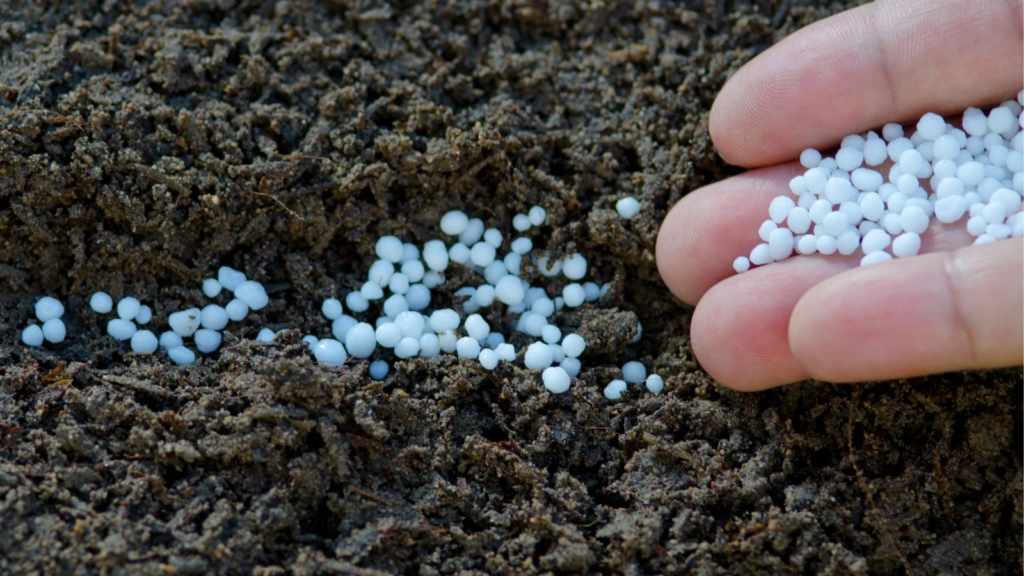
Ornamental Gardens and Lawns
Perennial ornamental plantings and lawns typically have lower sulfur requirements than vegetable gardens but still benefit from periodic attention to sulfur nutrition:
Maintenance Applications: For established ornamental beds, an annual light application of sulfur-containing fertilizer (often as part of a complete fertilizer) is usually sufficient to maintain adequate levels.
Specialty Plant Considerations: Acid-loving ornamentals like azaleas, rhododendrons, camellias, and hydrangeas benefit from elemental sulfur applications that both supply the nutrient and help maintain the acidic soil conditions they prefer.
Lawn-Specific Approach: Cool-season lawns (bluegrass, fescue, ryegrass) often respond well to sulfur applications in early spring and fall. The recommended rate is typically 1-2 pounds of sulfur per 1,000 square feet annually, divided into two applications.
The EPA’s WaterSense program notes that proper sulfur management in lawns can improve water use efficiency by promoting deeper root development, which enhances drought resilience. You can learn more about sustainable lawn practices at: https://www.epa.gov/watersense/outdoors
Container Gardens
Container gardens present unique challenges for sulfur management due to limited soil volume and frequent watering that can leach nutrients:
Preventative Approach: Incorporate a slow-release sulfur source (like gypsum or composted organic matter) into potting mixes before planting to establish a baseline sulfur reserve.
Maintenance Strategy: Use a balanced fertilizer that includes sulfur for regular feeding, or supplement with occasional Epsom salt applications (1 teaspoon per gallon of water monthly).
Monitoring: Container plants may show sulfur deficiency more quickly than in-ground plants. Watch for yellowing of new growth and be prepared to supplement as needed.
The USDA’s Urban Agriculture website offers additional guidance on container gardening nutrition that can help you maintain proper sulfur levels: https://www.nal.usda.gov/legacy/afsic/urban-agriculture
Environmental Considerations and Sustainable Sulfur Management
While addressing sulfur deficiencies is important for garden productivity, responsible management requires consideration of broader environmental impacts. Sustainable approaches balance plant needs with ecological stewardship.
Preventing Runoff and Water Quality Issues
Excessive sulfur applications can contribute to water quality problems if not managed carefully:
Application Timing: Apply sulfur amendments during dry periods when heavy rain isn’t expected for at least 48 hours. This allows time for soil incorporation and reduces runoff risk.
Buffer Zones: Maintain planted buffer strips between intensively managed garden areas and water features to capture potential runoff.
Split Applications: For larger quantities, divide total sulfur applications into smaller, more frequent doses rather than single large applications. This reduces leaching potential and improves plant utilization.
The EPA’s Nonpoint Source Pollution program provides guidance on preventing garden nutrient runoff that applies to sulfur management: https://www.epa.gov/nps/nonpoint-source-home-and-garden
Building Long-Term Soil Sulfur Reserves
Rather than relying solely on direct sulfur amendments, consider these sustainable approaches to building and maintaining soil sulfur:
Cover Cropping: Incorporate sulfur-accumulating cover crops like mustard, radish, or clover into your rotation. When these crops decompose, they release stored sulfur in forms readily available to subsequent plantings.
Compost Integration: Regular compost additions build organic matter that serves as a slow-release sulfur reservoir while improving numerous other soil properties.
Mulching: Organic mulches like leaves, straw, or wood chips gradually decompose and release sulfur along with other nutrients. Maintain 2-3 inches of organic mulch in perennial beds and around trees and shrubs.
According to the USDA Natural Resources Conservation Service, increasing soil organic matter by just 1% can increase soil sulfur storage capacity by approximately 100-150 pounds per acre. This highlights the importance of organic matter management in sustainable sulfur nutrition.
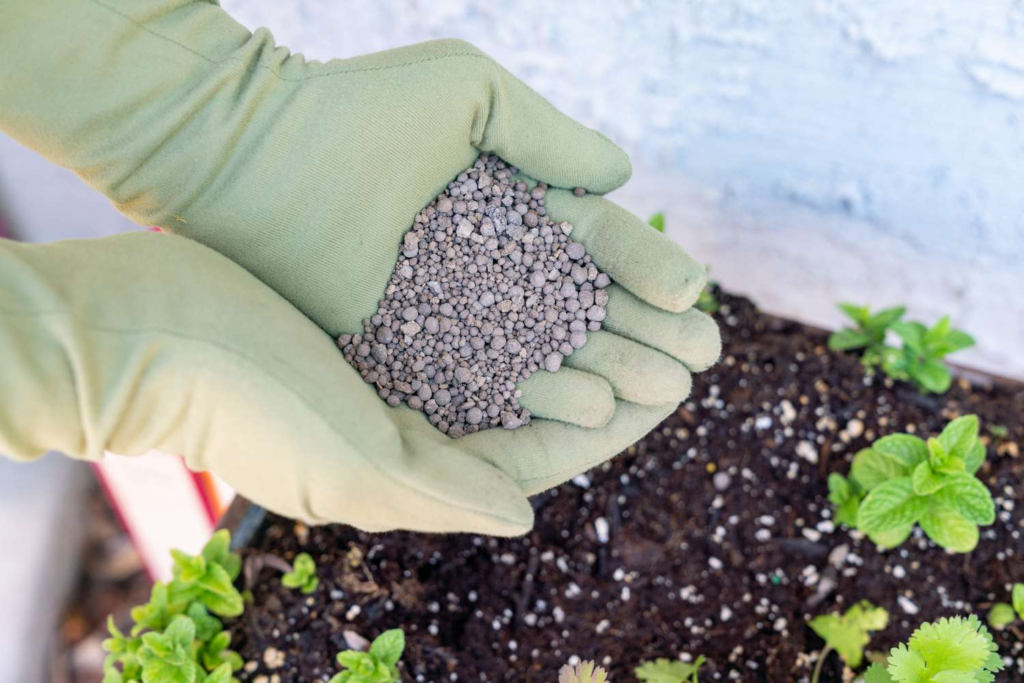
Balancing Soil Nutrients
Sulfur doesn’t exist in isolation — its availability and effectiveness are influenced by interactions with other nutrients and soil properties:
The Nitrogen-Sulfur Connection: Plants require sulfur and nitrogen in a relatively consistent ratio (typically around 10-15:1 N:S) for optimal protein synthesis. When increasing nitrogen applications, consider whether proportional sulfur increases might also be necessary.
Calcium-Sulfur Balance: Both nutrients are essential, but they can compete for plant uptake. When using gypsum (calcium sulfate), you’re providing both nutrients in a balanced form.
Micronutrient Interactions: Proper sulfur levels improve the availability and plant utilization of many micronutrients, particularly iron and manganese.
The USDA Agricultural Research Service has extensive research demonstrating that balanced nutrient management produces better results than focusing on individual nutrients in isolation. Their findings suggest that addressing multiple potential deficiencies simultaneously often produces synergistic benefits greater than the sum of individual nutrient effects.
Conclusion: Integrating Sulfur into Your Garden Management Plan
As you’ve discovered throughout this guide, sulfur plays a critical but often overlooked role in garden productivity and plant health. By understanding sulfur’s functions, recognizing deficiency symptoms, and implementing appropriate management strategies, you can ensure this essential nutrient doesn’t limit your garden’s potential.
Remember these key takeaways as you incorporate sulfur management into your gardening practice:
- Test before you treat: Soil testing provides the foundation for informed sulfur management. Regular testing every 2-3 years helps track changes and guide amendment strategies.
- Consider the whole system: Sustainable sulfur management is integrated with overall soil health practices, not an isolated intervention. Building organic matter, maintaining appropriate pH, and balancing all nutrients creates the foundation for optimal sulfur utilization.
- Match sources to needs: Different sulfur sources serve different purposes. Choose amendments based on your specific situation — whether you need immediate correction of deficiencies, gradual pH adjustment, or long-term building of soil reserves.
- Observe and adapt: Your plants provide valuable feedback about their sulfur status through their appearance, growth patterns, and productivity. Develop the habit of close observation and be prepared to adjust your approach based on what your garden tells you.
- Think preventatively: Once you’ve corrected any existing sulfur deficiencies, focus on preventative maintenance to avoid future problems. Regular, moderate inputs are generally more effective than reactive corrections after deficiencies appear.
By giving sulfur the attention it deserves in your garden planning and maintenance, you’ll create the conditions for healthier, more productive plants and more rewarding gardening experiences. The “fourth macronutrient” may not get as much attention as nitrogen, phosphorus, and potassium, but its impact on your garden’s success is no less significant.
For the most current research and recommendations on soil sulfur management, consult your local Cooperative Extension Service, which provides region-specific guidance based on the latest agricultural research. The USDA’s National Agricultural Library also maintains extensive resources on soil fertility management available to home gardeners: https://www.nal.usda.gov/
